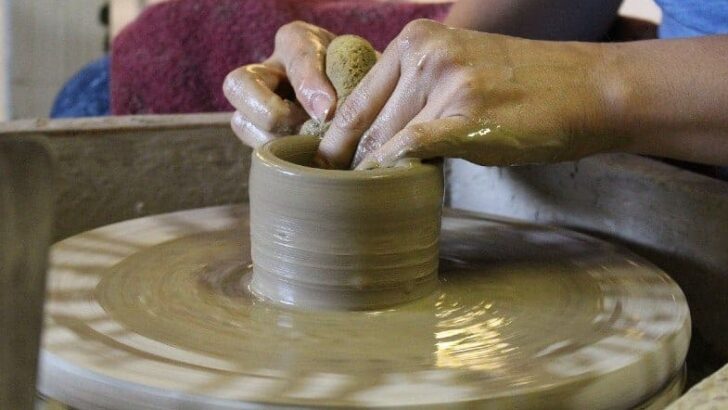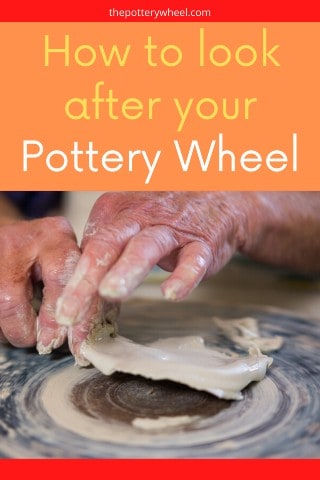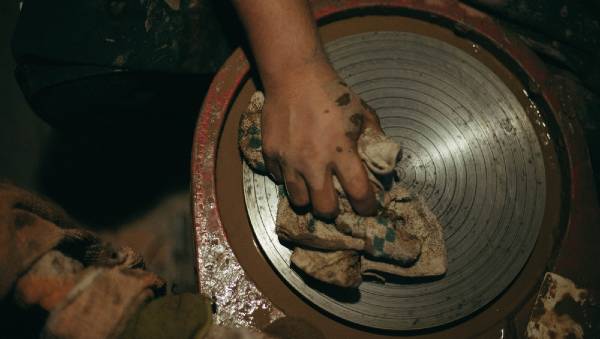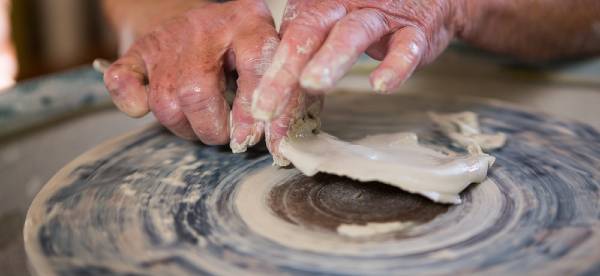Your cart is currently empty!
Why Has my Wheel Head Corroded on my Pottery Wheel?
Published:
Last Updated:

Affiliate Disclaimer
As an affiliate, we may earn a commission from qualifying purchases. We get commissions for purchases made through links on this website from Amazon and other third parties.
Many people value the aesthetic value of wheel heads. As such, people dedicate their time and resources towards wheel head maintenance. But wheel heads are still prone to corrosion. Perhaps this has left you wondering why has my wheel head corroded on my pottery wheel despite regular maintenance. This article demystifies the causes of wheel head corrosion on your pottery wheel.
Wheel head manufacturers give different reasons why your wheel head may corrode on your pottery wheel. These include not cleaning clay off the wheel, pitting, and using acid-based cleaners. A good solution is to clean your wheel head often using use a pH-balanced cleanser and fix pitting regularly.
Corrosion occurs when iron reacts with oxygen and moisture, resulting in rust. Rust can proliferate when the metal is exposed to chemicals such as acids and salty water and weather elements. The main causes of corrosion are:
- Pitting
- Using acid-based cleansers
- Inappropriate cleaning techniques

How Pitting Leaves Your Wheel Head Corroded
Wheel heads can succumb to pitting corrosion when the factory coating is chemically attacked or is physically damaged. When the factory coat peels off, the underlying metal becomes exposed to air and water. This makes the wheel head prone to erosion.
Pitting is vigorous when the solution on the metal surface is salty. Pitting corrosion can also occur when the wheel head is poorly maintained and exposed to water droplets. The water droplets react on the wheel head with oxygen, resulting in corrosion.
Usually, pitting corrosion can be caused by high concentrations of chloride ions(1). For instance, seawater has a high concentration of chloride ions due to dissolved sodium chloride. Therefore, when you clean your wheel head with seawater, the chloride ions can start the process of pitting.
It is important to remember that salty conditions accelerate the process of corrosion. That means that cleaning your wheel head with seawater makes pitting corrosion even worse.
Pitting corrosion can also be initiated by poor application of a protective coating. In this case, the protective coating becomes prone to damage resulting in exposure of some parts of the wheel head to oxygen and moisture.
Pitting corrosion can also be initiated by non-uniformities in the metal used to make wheel head.
Pitting corrosion is the most aggressive form of corrosion of the wheel head. Additionally, it is hard to detect. As such, pitting can create a cavity that penetrates your wheel head in a vertical direction down from the surface. This makes it harder to spot.

How to Prevent Pitting Corrosion
Every so often, you need to clean the clay off of your wheel head. It is important to use recommended procedures to expose the pits fully and remove corrosive products.
Exposing the pits and removing debris off the wheel head ensures that pitting corrosion is detected early enough. You can then take steps to fix the problem.
Besides, when the wheel head is clean and free from clay the extent of the damage can be evaluated effectively. If you detect the corrosion in time, you can apply a protective coat. This will cover the pits and prevent corrosion from becoming severe.
On the other hand, if the damage is severe you may decide to replace the wheel head. New wheel heads are quite inexpensive, and it is often easier to simply replace them.
How Cleansers Make Your Wheel Head Corroded
Some potters prefer using acid-based cleansers to clean their wheel head. These leave your wheel head sparkling clean. However, they can strip away the protective coat and make your wheel head vulnerable to corrosive attacks.
In particular, these types of cleansers cause general corrosion as well as pitting corrosion. Therefore, it’s a good idea to stick to using recommended cleansers to prevent your wheel head from being corroded.
Ideally, use a pH-balanced cleanser that will not strip away the wheel head’s preventive coating. If you are not sure of the type of cleanser to use you can always consult the manufacturer.
Cleaning Methods that Corrode Your Wheel Head
Cleaning your wheel head regularly does not mean that your wheel head is safe from corrosive attacks. However, using the recommended cleaning techniques is what will save you from losing your wheel head to corrosion.
To begin, you should remove all the clay off your wheel head every time you have used it. A quick wipe with a damp cloth is not really enough. Moisture from the clay left on a wheel head, combined with oxygen in the air can react with metal. This can result in corrosion.

The other inappropriate cleaning technique is using abrasive materials to clean your wheel heads. Using abrasive materials can peel off the protective coating of the wheel head. This can expose the material to attacks by moisture and atmospheric oxygen, resulting in corrosion.
As a consequence, manufacturers always recommend using a sponge during cleaning to ensure the protective coating is not damaged.
It is understandable that abrasive materials will always make your wheel head look more polished. However, their long-term effects on the wheel head override the short-term superb cleansing capabilities.
It takes a shorter time to clean your wheel head using abrasive materials as compared to using a sponge. However, it’s better to spend a little longer time cleaning your wheel head and avoid irreversible damage.
Remember that the end result of severe corrosion is the replacement of the wheel head. You can save yourself the pain and cost of replacing a wheel head by following the recommended cleaning procedures.
In general, cleaning up after you have had a session on the wheel is good practice. Keeping on top of clay mess is a good starting point.
Final Thoughts
To slow down corrosion, be sure to properly clean and polish your wheel head. Firstly, clean your wheel head regularly to prevent the accumulation of clay.
If your wheel head is corroded, it’s not the end of the world. They can be replaced, but if you can avoid having to do this, it is best. A good rule of thumb is to always use a pH-balanced cleanser. This will not strip away the wheel head’s preventive coating. Furthermore, regularly polish your wheel head to remove corrosive products and minimize pitting corrosion.



